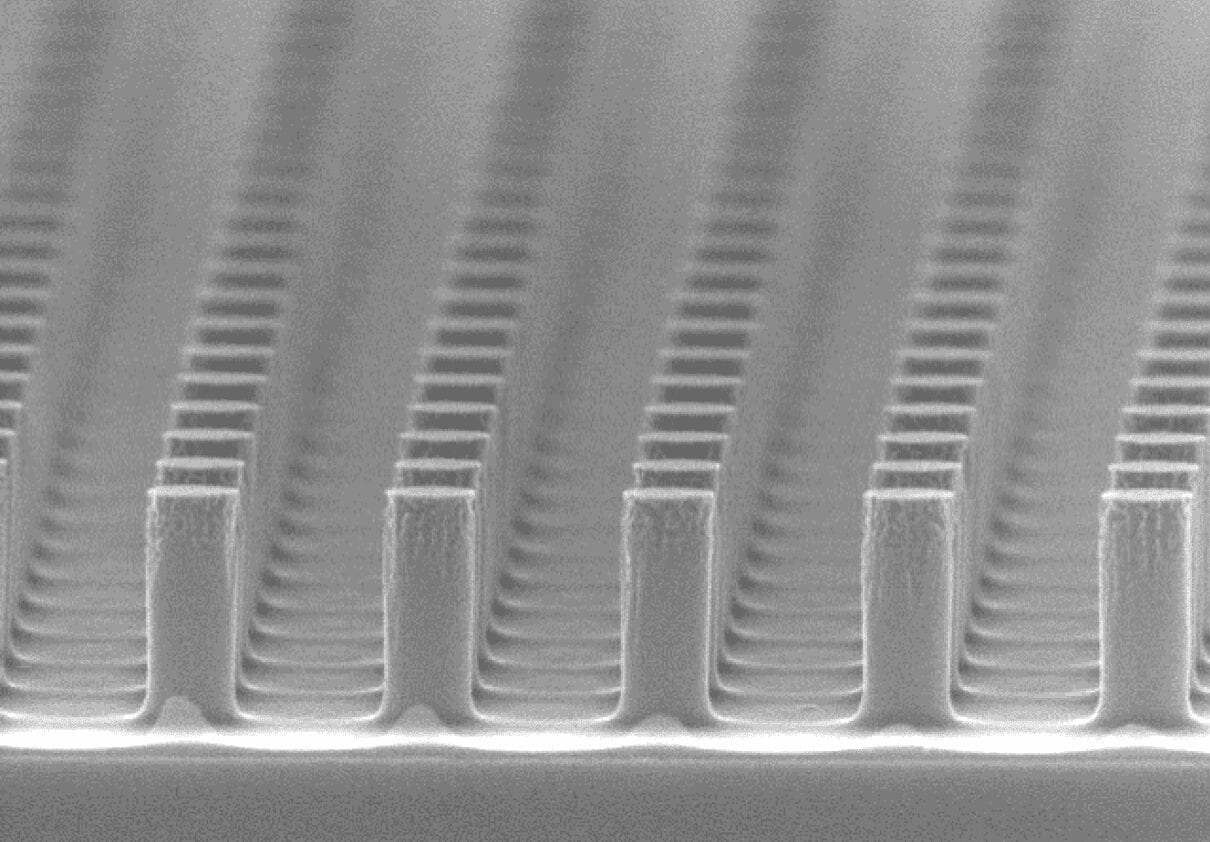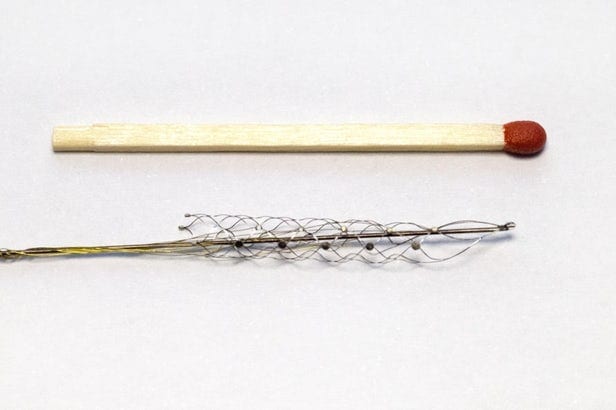
Using electrical impulses, the ‘tweezers’ can extract single DNA, proteins and organelles from living cells without destroying them.
We are continuously expanding our knowledge on how cells function, but many unanswered questions remain. This is especially true for individual cells that are of the same type, such as brain, muscle or fat cells, but have very different compositions at the single-molecule level.
With our tweezers, we can extract the minimum number of molecules that we need from a cell in real time, without damaging it.Professor Joshua Edel
Cataloguing the diversity of seemingly identical cells can help researchers to better understand fundamental cellular processes and design improved models of disease, and even new patient-specific therapies.
However, traditional methods for studying these differences typically involve bursting the cell, resulting in all of its contents getting mixed. This results not only in the loss of spatial information – how the contents were laid out in relation to each other, but also in dynamic information, such as molecular changes in the cell over time.
Extraction without destruction
A new technique, developed by a team led by Professor Joshua Edeland Dr Alex Ivanov at Imperial College London, enables researchers to extract single molecules from live cells, without destroying them. The research, published today in the journal Nature Nanotechnology, could help scientists in building up a ‘human cell atlas’, providing new insights into how healthy cells function and what goes wrong in diseased cells.
Professor Joshua Edel, from the Department of Chemistry at Imperial, said: “With our tweezers, we can extract the minimum number of molecules that we need from a cell in real time, without damaging it.
“We have demonstrated that we can manipulate and extract several different parts from different regions of the cell – including mitochondria from the cell body, RNA from different locations in the cytoplasm and even DNA from the nucleus.”
The tweezers are formed from a sharp glass rod terminating with a pair of electrodes made from a carbon-based material much like graphite. The tip is less than 50 nanometers (a nanometre is one-millionth of a millimetre) in diameter and is split into two electrodes, with a 10 to 20-nanometre gap between them.
By applying an alternating current voltage, this small gap creates a powerful highly localised electrical field that can trap and extract the small contents of cells such as DNA and transcription factors – molecules that can change the activity of genes.
Picking out individual molecules
The method is based on a phenomenon called dielectrophoresis. The tweezers generate a sufficiently high electric field enabling the trapping of certain objects such as single molecules and particles. The ability to pick out individual molecules form a cell sets it apart from alternative technologies.
These nanoscale tweezers could be a vital addition to the toolbox for manipulating single cells and their parts.Dr Alex Ivanov
The technique could potentially be used to carry out experiments not currently possible. For example, nerve cells require much energy to fire messages around the body, so they contain many mitochondria to help them function. However, by adding or removing mitochondria from individual nerve cells, researchers could better understand their role, particularly in neurodegenerative diseases.
Dr Alex Ivanov, from the Department of Chemistry at Imperial, said: “These nanoscale tweezers could be a vital addition to the toolbox for manipulating single cells and their parts. By studying living cells at the molecular level, we can extract individual molecules from the same location with unprecedented spatial resolution and over multiple points in time.
“This may provide a deeper understanding of cellular processes, and in establishing why cells from the same type can be very different to each other.”
Learn more: Nanoscale tweezers can perform single-molecule ‘biopsies’ on individual cells
The Latest on: Nanoscale tweezers
[google_news title=”” keyword=”nanoscale tweezers” num_posts=”10″ blurb_length=”0″ show_thumb=”left”]
via Google News
The Latest on: Nanoscale tweezers
- How to Use Tweezers Provide Precision for Trend Traderson May 4, 2024 at 5:00 pm
A tweezer is a type of technical analysis pattern used by traders that generally involves two candlesticks. It can signify either a market top or bottom. Tweezers can take on varying appearances ...
- Physicists create an optical tweezer array of individual polyatomic molecules for the first timeon May 2, 2024 at 5:00 pm
An optical tweezer array of CaOH molecules. a, Averaged image of the CaOH tweezer array, attained by imaging the molecules for a 50 ms duration and averaging over hundreds of iterations of the ...
- ‘Those are the elite tweezers though…’: Viewers divided after Walgreens shopper slams $32 tweezerson May 1, 2024 at 6:09 am
Everything seems more expensive these days, from groceries to streaming services, but no one could’ve predicted that a good pair of tweezers would be so expensive. Recently, TikToker Shannon ...
- First high-resolution 3D nanoscale chemical imaging achieved with multi-modal tomographyon April 29, 2024 at 5:00 pm
"Seeing invisible worlds, far smaller than the wavelengths of light, is absolutely critical to understanding the matter we are engineering at the nanoscale, not just in 2D but in 3D as well," said ...
- Diamond-based quantum sensing microscope offers effective approach for quantifying cellular forceson April 22, 2024 at 6:15 am
Currently, several leading technologies such as traction force microscopy (TFM), optical/magnetic tweezers ... to measure cellular force on a nanoscale. This overcomes the limitations of ...
- Nanomanipulation: Precise Control at the Nanoscaleon April 13, 2024 at 1:40 am
This image demonstrates the precise control and manipulation capabilities of nanomanipulation techniques at the nanoscale. Read more. (Image: Özlem Sardan, DTU) Optical tweezers use focused laser ...
- Magnetic Tweezers: A Powerful Tool for Manipulating Biomolecules at the Nanoscaleon April 1, 2024 at 7:39 pm
This allows researchers to study the mechanical properties, interactions, and dynamics of these biomolecules at the nanoscale with high precision and control. Magnetic Tweezers in Action: An ...
- New method to measure entropy production on the nanoscaleon March 26, 2024 at 6:42 am
Extending thermodynamics for ultrashort excitations will provide novel insights into how materials function on the nanoscale," says Matthias Geilhufe, Assistant Professor at the Department of ...
- Nanoscale Horizonson October 18, 2023 at 10:37 pm
Nanoscale Horizons Communications must include a separate ‘new concepts’ statement. This statement should be a paragraph of no more than 200 words and should address the following questions: What new ...
via Bing News










